How to Grow Green Beans + Shell-out Beans
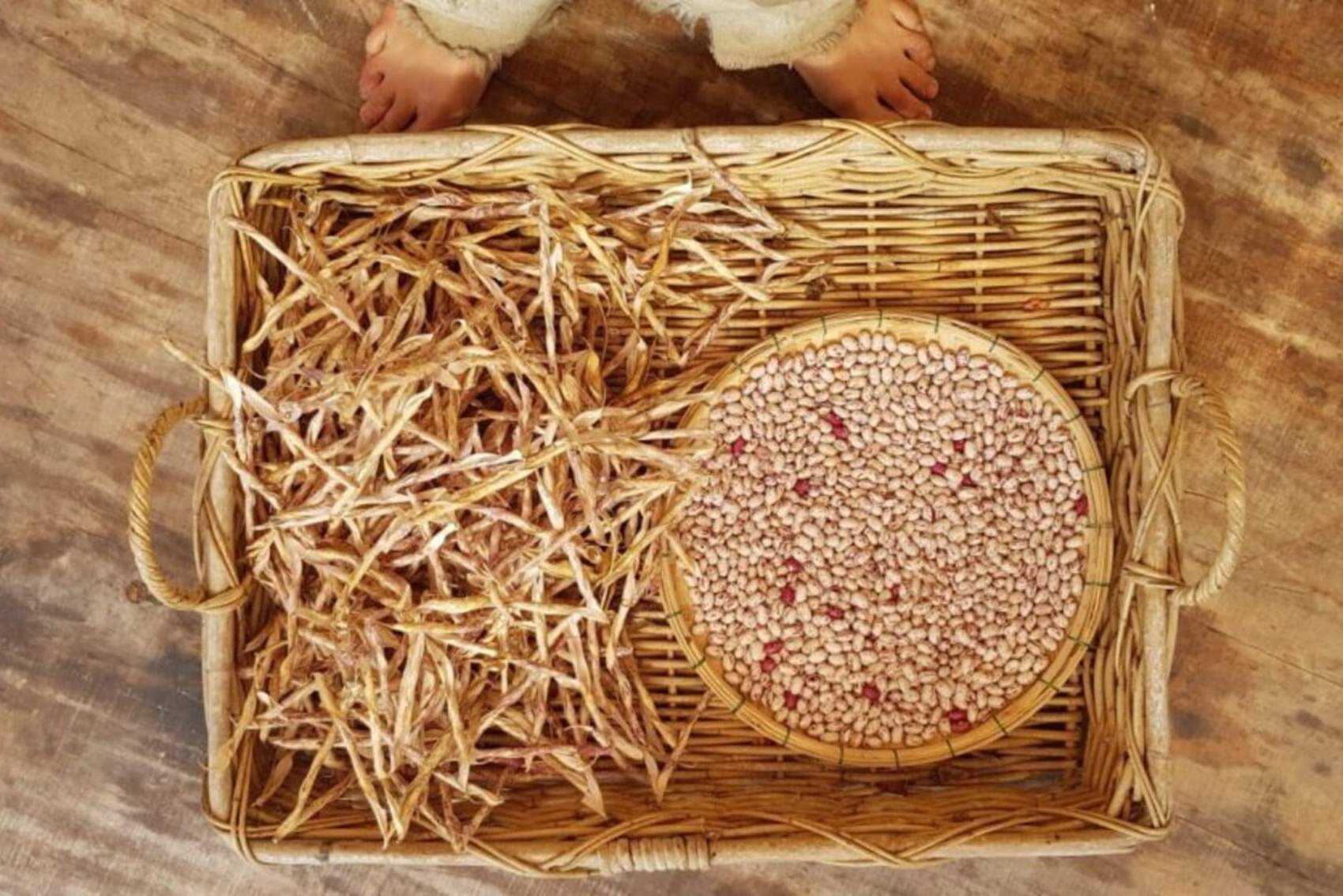

Beans have a bad rap. I mean who lists beans as their fav crop?! People who grow their own, thats who! Fresh picked is the only way to go, and there are so many awesome varieties to try. And then theres dried beans, or shellouts. Homegrown are worlds apart - so creamy and good, you'll never be able to eat a bought one again.
Beans are the ultimate beginners crop, and a dream for busy people - they pump out a tonne of crop in a small space. As do shellouts - surprisingly. It doesn't take many vines to grow enough for a big jar that'll see you through the year. What a high value crop - I mean, home grown protein, hello!
Timing
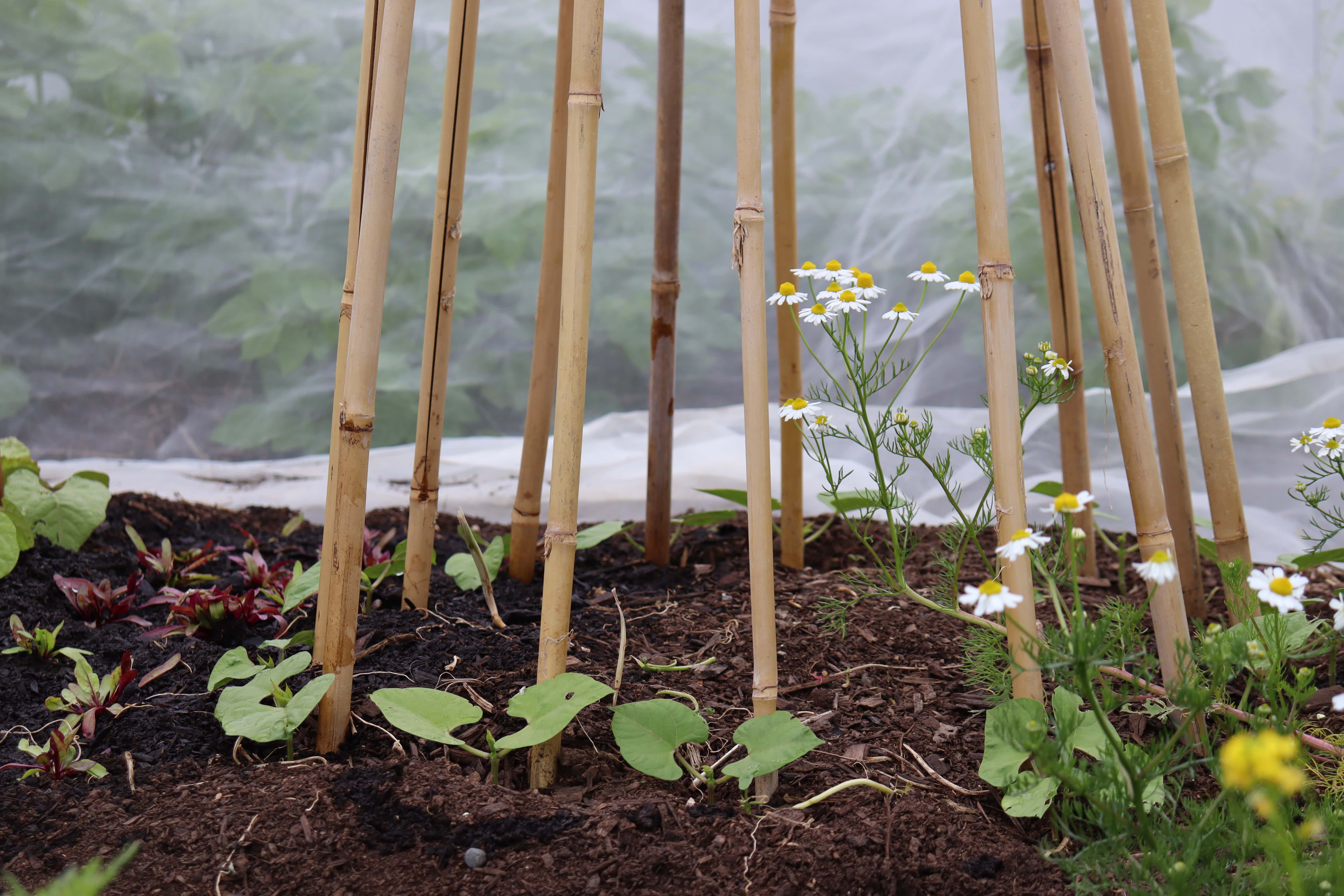
My first climbing green beans go in the greenhouse in September. I wait until November, or even December if summer is slow in coming, before planting my outside crop. Between these 2 plantings of climbing beans we have more than enough for our table.
If you have long Indian summers, you could plant another lot of climbing beans in early January. They'll start cropping mid March and carry on until its gets cold. I sometimes do a January crop of dwarf beans in the greenhouse is summer hasn't been too flash and the outdoors one haven't cropped so well.
Green beans
- Climbing green beans are so prolific I only do 2 plantings. From seed to harvest is about 12 weeks. You can keep them going a goodly long time with a daily harvest.
- Dwarf green beans are useful for me, from January as they only take about 9 weeks to come cropping. Being short, they're well suited to life beneath a cloche - which is handy if you don't have a greenhouse and want to extend your bean harvest in the cooler shoulder seasons.
Shellout Beans
- Climbing shellout's take about 17 weeks from transplant until harvest, so I generally only get the one planting in.
- Dwarf shellout's are faster to crop, and I can successionally plant them through until January.
Sow + Grow
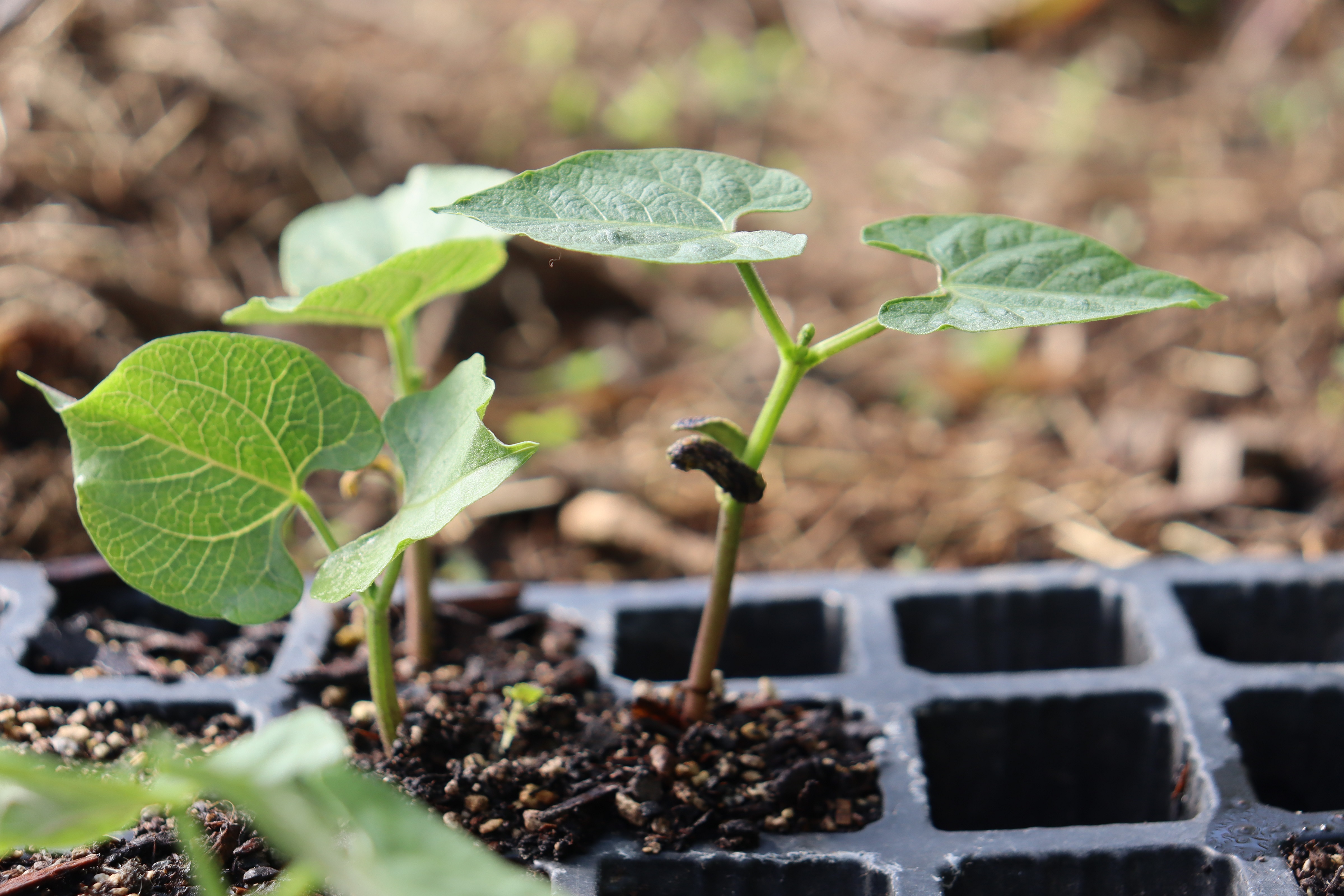
Beans are flexible and can either be tray sown, or into the garden direct once the soil is sitting at 18 - 20°C. This lovely warmth brings speedy germination, which they need - if germination lags, the seed often rots.
I give them a head start by tray sowing them in the warmth of the greenhouse. Though they need 20°C to rise up, they are perfectly happy to be transplanted into 15°C soil. This buys you time as well as a fighting chance against slugs and snails who love beans as much as I do. On heavy clay soil, create a mound or ridge to plant into to as they dont like wet feet.
In line with their no nonsense nature, all beans need is a bed of good compost plus a regular supply of moisture - neither wet nor dry - just right. Mulch helps hold the moisture in. Drying out is disastrous, as is cold wet weather, which we can sometimes have until January in Horowhenua.
Dwarf Beans
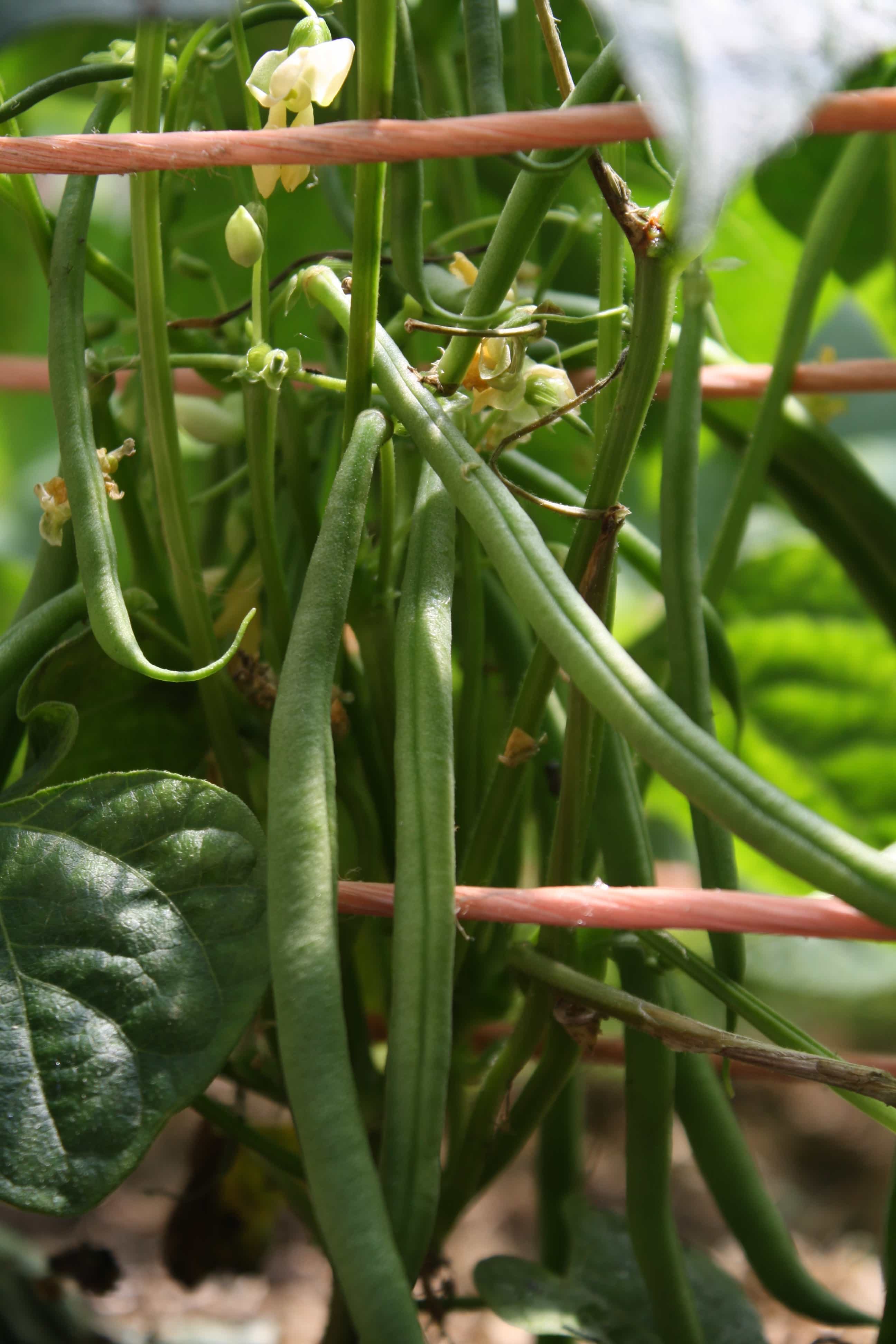
Dwarf beans get a special mention, because they're are a super handy crop. Climbing beans are more productive but little bush/ dwarf's certainly have their place. Fruits come quickly - about 60 days after sowing - and the entire crop arrives in a 2 - 3 week period.
Sowing a new row once a fortnight or whatever best suits your needs, keeps you and yours in beans. They're the bean for you if its windy at yours - being shorter they are more easily tucked out of the blast and are useful if you don't have frames. They'll happily tuck along the front of any crop for easy picking - apart from alliums, they just do not enjoy each others company.
Companions
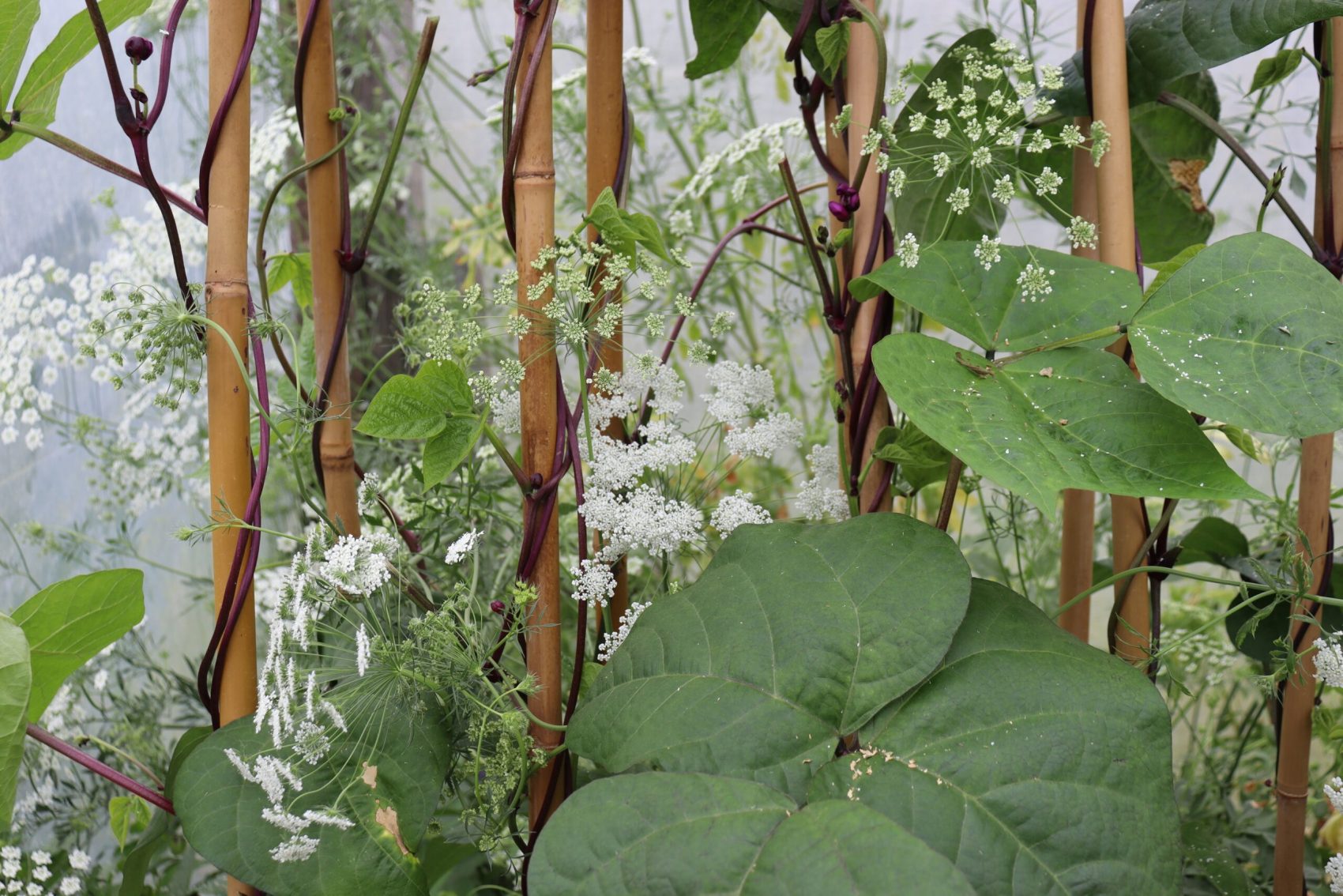
Pair them with flowers to call in the bees, confuse the pests and keep the ground covered in the easiest and prettiest of ways - bishops flower to wind through and nasturtium, calendula or marigold along with cucumber, gherkin or squash to happily scramble at their feet. Salads fit here too.
Keep on top of shield bugs and snails, by squashing them on your daily walk about.
Frames
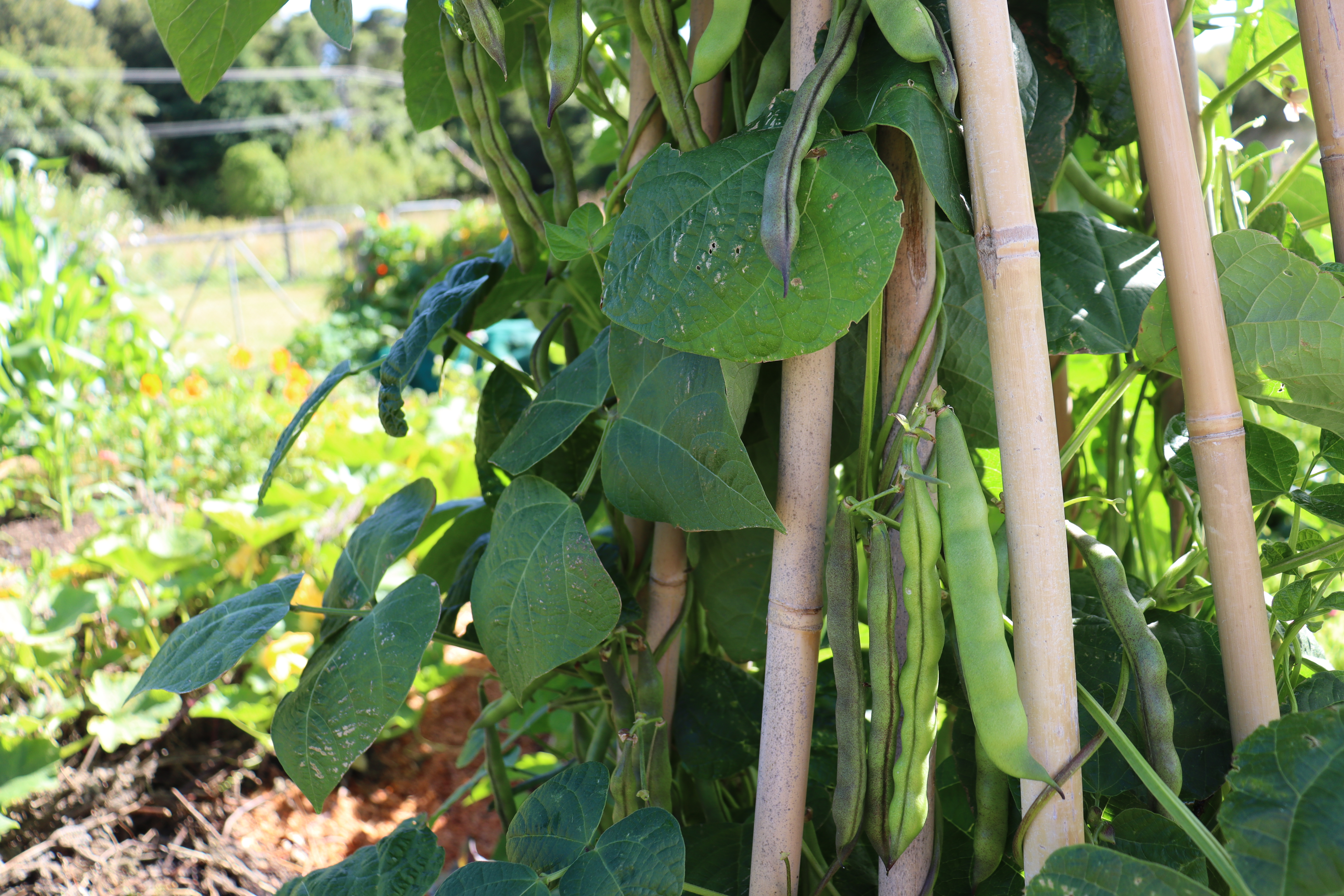
Nothing satisfies me more than a good looking solid frame that can handle windy days and heavy crops. Important yes, because if the frame isnt up to it over goes the crop. A minimum of 1.8m high will give the vines a decent grow space.
Climbing beans suit a variety of frames. As long as you have good access for picking off shield bugs and for harvesting - especially important if its green beans you are growing.
- Bamboo poles are perfectly suited to beans twining nature and the whole vine slides off easily at the end. I like a row of angled poles in an A frame shape, lashed at the top and secured with a horizontal pole along the top for strength. This suits green beans really well, providing easy access for the all important daily pick and shield bug squash off. A tipi is easy to create and so very cute! but not that functional for green beans who need a daily pick. They're well suited to shellout though, because there is no daily harvest, just one big one at the end.
- I love reinforcing mesh for its ease. Simply tie it to a robust stake either end. This makes a groovy living fence - position for a summer time privacy screen alongside your deck or wherever you wish anonymity. At the end of the season, its easy to pack down and stores nice and flat against a wall. The downer is untangling the vines from the mesh, but it seems a small price to pay.
- Jute string attached to a frame gets over this problem as the string and vines can all be composted together. Tie it to an overhead beam or wire and tie the bottom off to a low rail. You can bury the bottom beneath the seedlings but it'll likely rot off before seasons end. Perhaps twist a few strings together in this instance or use baling twine instead.
- Flax flowers are fab if you have a frame to attach them too, or if not windy at yours they make a lovely tipi for shell-outs. Compost them vines and all at the end.
- I'm a big fan of growing beans on an arch over a pathway to maximise growing space + for the sheer fun of it! Just be sure to provide enough height so the tallest member of your house can freely walk under dangling beans. Detailed sketches of all my favourite bean frames are in my book.
Dwarf beans are easier by far. They dont necessarily need a frame, though in my high rainfall climate I do provide support to lift them up for better airflow. All they need is a short stake at each end of the row. Twine tied around the outside of the stakes at a few intervals, say 15cm apart, will help hold, floppy bush beans upright.
Shellout Beans
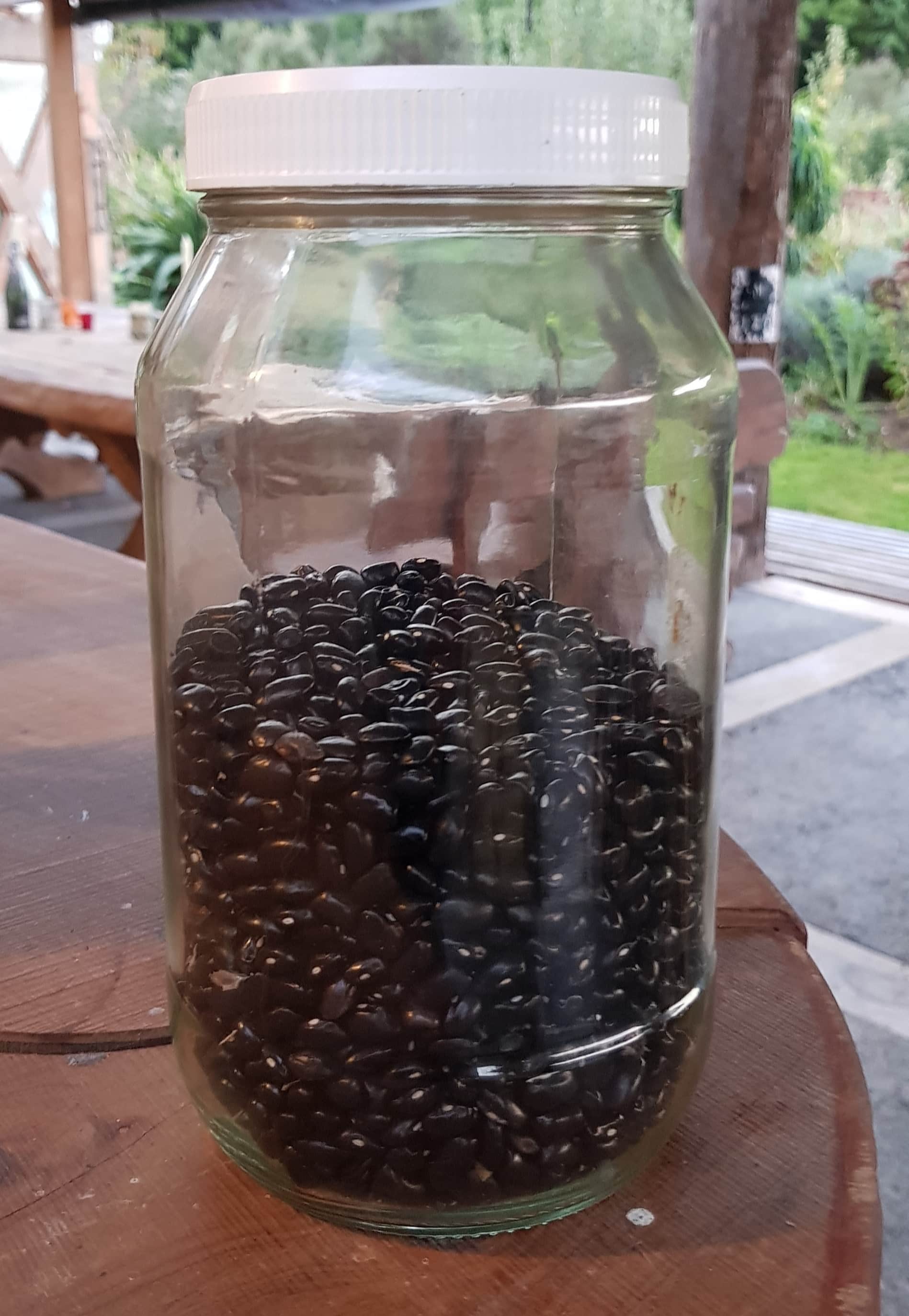
Shell-out beans are the beans you grow for seed to use in refried beans, soups, fritters and stews. A truly resilient crop - homegrown protein, super productive in a small space, demand little from the soil + require no preserving at all - just pop them out of the dry pods and fill a big jar. Homegrown shellouts are worlds apart from bought dried beans. They're wonderfully creamy, so much faster to cook and next level tastier - because they are fresh.
Yes, cooking beans is more effort than cans, but not by much, and each step is easy as pie. An overnight soak in plenty of water, then drain them the next day and cook at a good boil for about 30 minutes, or until creamy - and boy oh boy are fresh ones creamy. A pressure cooker saves on time and a slowcooker works really well too.
I like to use all my stored beans by time the next seasons beans are ready. The older they get, the tougher they are. Although even your year old beans will be way fresher than anything you can buy.
Shellout varieties
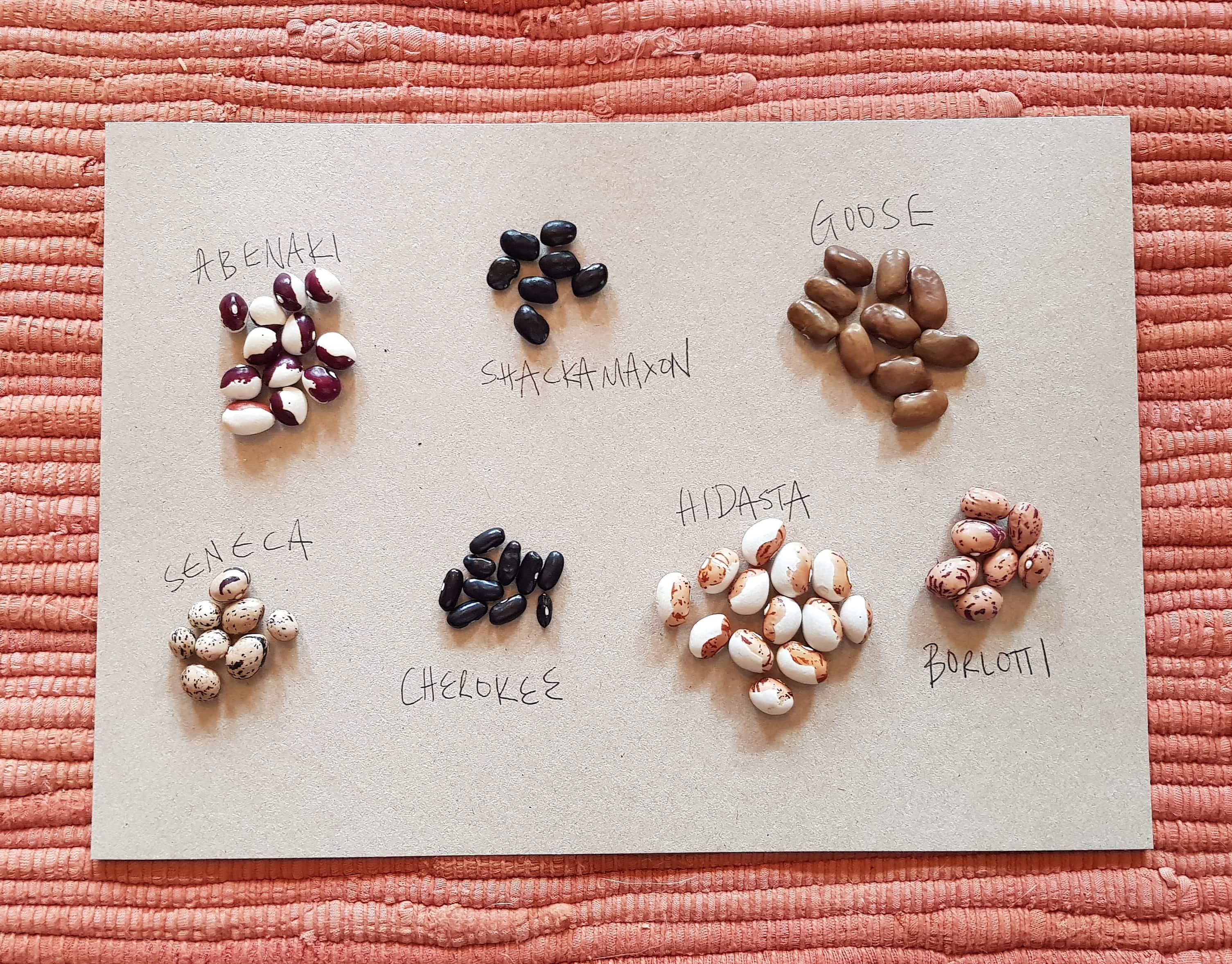
There are so many good varieties to choose from - you'll find it hard to pick especially if, like me, you are easily seduced with cool names. Checkout Mark Christensens enticing collection, Koanga Gardens and Sethas Seeds as well.
My climbing shellout regulars are
- Blue Shackamaxon - a really good black bean,
- Hidatsa Shield - a sweet, creamy bean that works anywhere a white bean does including hummus,
- Fat Goose - which is creamy and delish in soups and stews,
- Abenaki pean - a kind of adzuki bean substitute,
- Cherokee - a prolific producer and the very pretty
- Seneca Speckled Bird Egg - yip, you know it, the name got me!
Dwarf shellouts are surprisingly productive. Sow a succession mid spring through summer to steadily fill your jars.
- Dwarf borlotti's do really well here. I've grown them for years. A simple borlotti, tomato + aubergine stew is one of my favourite Autumn feeds.
- Soya beans are another dwarf bean worth growing if you live somewhere warm. They aren't terribly productive in my Levin garden when summers off pace, but steamed fresh with salt they are such a beautiful snack I can never resist.
- Mark has a fab collection of interesting sounding dwarf shellouts which I valiantly resist each season - I really truly grow enough!
Harvest +Store
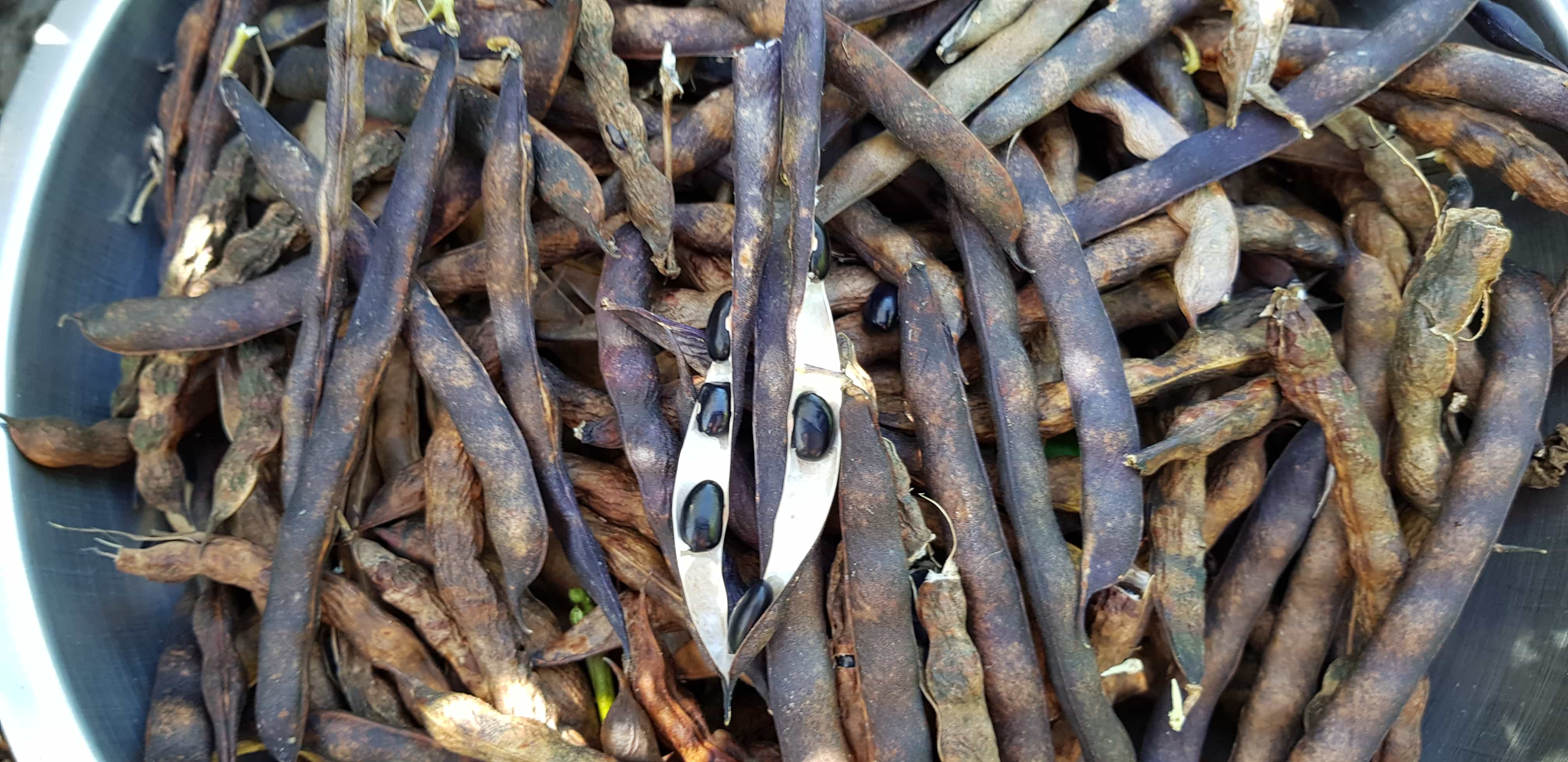
Shellout Beans: Leave shellout beans to dry on the vine - the ultimate do nothing crop! As soon as they are dry - get them in. Pop a pod open to check. Bite on a bean and if its rock hard its ready. Don't leave them hanging around once dry - they'll get mouldy and the pods will, at some point burst open.
Pop the beans out. Filter out any mouldy or squishy ones - put them on the fire, and put the rest in a jar in a dark cool pantry.
Green beans: need a daily or at least every second day pick. Harvest before the seeds are visible - any that are bumpy and huge, I toss on the ground to return to the soil. Pick all the beans that are ready - even if its more than you can eat for tea. This keeps the vines up to date - ideally the only beans attached after harvest, are young ones. This keeps the vines in better health and a fresh flush of flowers coming for yet more beans. Pick and squash any shield bugs or snails at the same time.
You soon learn how many beans you need to grow - and its not many! The advantage comes from spreading them out over the season
